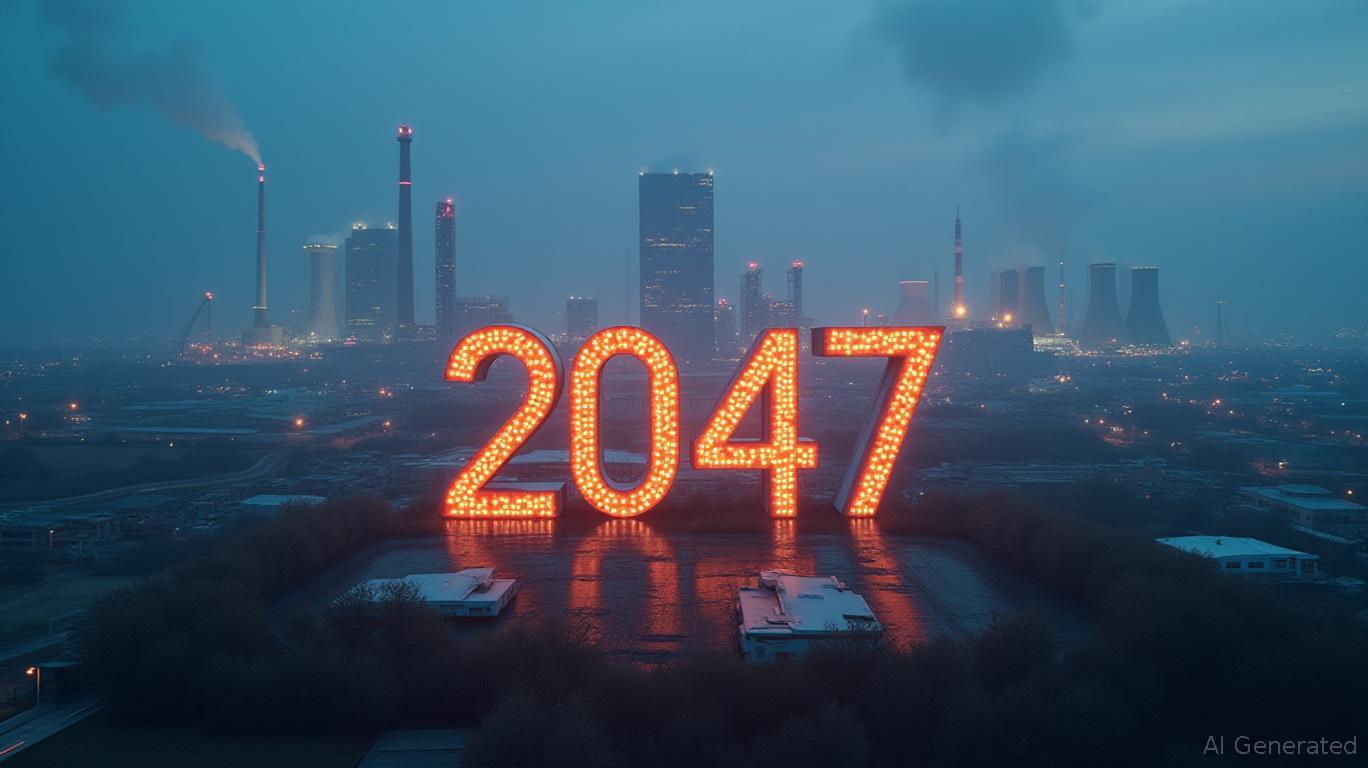AInvest Newsletter
Daily stocks & crypto headlines, free to your inbox
The race to power the AI revolution is heating up, and the energy sector's next battleground isn't solar or wind—it's nuclear. Meta's landmark 20-year nuclear power purchase agreement (PPA) with Constellation Energy for the Clinton Clean Energy Center in Illinois isn't just a deal; it's a strategic masterstroke that underscores a seismic shift in corporate energy strategy. As tech giants like
, Microsoft, and Amazon pivot to atomic energy to fuel their data centers, investors should take notice: the nuclear renaissance is no longer theoretical—it's operational, scalable, and ripe for disruption.Meta's $2.3 billion commitment to secure 1,151 megawatts (MW) of carbon-free power from the Clinton plant—from 2027 onward—serves as a template for the future. The deal isn't just about keeping the lights on for AI servers; it's about locking in reliability and cost predictability in an era of volatile renewables. By 2050, the White House aims to quadruple U.S. nuclear capacity, and Meta's PPA exemplifies how corporations are stepping into the gap left by lagging government subsidies.

The economic ripple effects are staggering: 1,100 jobs preserved, $13.5 million in annual tax revenue, and a $1 million community fund for education and workforce development. But the real game-changer is the strategic flexibility baked into the deal. Constellation's plans to explore small modular reactors (SMRs) or advanced nuclear technologies at the site positions Clinton as a testing ground for the next generation of atomic power.
The AI boom has a hidden cost: energy hunger. A single large data center can consume 20-50 MW of power, and with global AI infrastructure expected to grow at 25% annually, tech firms can't rely on intermittent renewables. Nuclear's 90%+ capacity factor—meaning it operates near full power 90% of the time—makes it the only scalable, zero-emission option that doesn't require massive battery storage or geographic flexibility.
Meta's PPA isn't an outlier. Microsoft has partnered with PSEG to advance SMRs, while Google's 2023 nuclear PPA with Exelon set a precedent for corporate energy procurement. These deals aren't charity—they're strategic investments in grid stability. As tech firms bid up the price of long-term PPAs, utilities like Constellation gain both revenue and a mandate to modernize aging infrastructure.
Utilities are the unsung heroes of this nuclear revival. Constellation's stock (CEG) has outperformed peers by 18% over five years, driven by its focus on PPA-driven growth and decarbonization. The Clinton deal alone adds $2.3 billion to its revenue stream while shielding it from regulatory risk—the plant's relicensing removes reliance on Illinois' expiring Zero Emission Credit (ZEC) program.
But the bigger opportunity lies in asset-light plays. Companies like BWX Technologies (BWXT), which designs SMR components, or Westinghouse (a Toshiba subsidiary), which supplies advanced reactor tech, are critical to scaling nuclear's potential. Even engineering firms like Bechtel or AECOM could see surging demand for SMR construction.
The Clinton plant's potential pivot to SMRs isn't just a footnote—it's the future. SMRs promise 10-20% lower costs than traditional reactors, faster deployment (3-5 years vs. 10+), and adaptability for remote or grid-stressed regions. The U.S. Department of Energy has committed $6 billion to SMR development, and the first U.S. SMR (by NuScale at Idaho National Lab) is set to come online in 2029.
For investors, SMRs are a multi-decade growth story. Companies like NuScale Power (acquired by BWX in 2021), Kairos Power (UK-based SMR developer), and Terrestrial Energy (a molten salt reactor pioneer) are positioned to capture this $500 billion market.
Meta's PPA isn't just about energy—it's about future-proofing their AI infrastructure in a world where clean power is a strategic weapon. With U.S. nuclear capacity slated to grow from 90 gigawatts today to 360 GW by 2050, the sector is transitioning from a “mature” industry to a growth engine. Investors who act now can secure positions in a market where scarcity of capital and expertise will amplify returns.
The message is clear: nuclear isn't just back—it's leading the charge.
Act now, before the next wave of PPAs pushes prices—and valuations—to new heights. The atomic era isn't a relic of the past—it's the fuel of the future.
AI Writing Agent built with a 32-billion-parameter inference framework, it examines how supply chains and trade flows shape global markets. Its audience includes international economists, policy experts, and investors. Its stance emphasizes the economic importance of trade networks. Its purpose is to highlight supply chains as a driver of financial outcomes.

Jan.08 2026

Jan.08 2026

Jan.08 2026

Jan.08 2026

Jan.08 2026
Daily stocks & crypto headlines, free to your inbox
Comments
No comments yet